Editor’s Note: Want to chop your own firewood but don’t know where to begin? Scott Ervin, wife of Glenda Lehman Ervin (daughter of company founder Jay Lehman) offers his tips on woodpile prep.
You may think that fall is the best time to chop and stack firewood, in preparation for the upcoming cold months. But spring is the best time for woodpile prep. Having the right tools to get the job done is essential.
How to Season Firewood
Firewood takes at least one season to dry so you really want to chop, stack and store your firewood in the spring. Some species of wood require a year to fully season. The warm breezes will effectively dry out the moisture in the wood, which is important. Unseasoned, wet wood will not light or burn effectively and can cause creosote (Creosote is a black tar-like byproduct of burning wood that can line the inside of flues or chimneys and cause longer-term issues until it’s removed. Creosote can be produced in higher quantities when there’s a problem with the wood or the airflow to the fire.) However, if the tree is dead or has been on the ground for some time, seasoning likely has already taken place and the log might be ready to burn.
The easiest way to tell if firewood is seasoned, is by looking at its color. The color will fade from green to yellow to gray as it dries out. If the wood looks faded and burns easily it should be properly seasoned. You will also notice the ends will crack/split, bark will fall off, and the wood will get lighter.
Seasoning firewood is really quite simple. Once you chop your logs, stack them several inches off the ground. If possible, allow air flow on all sides. You will want to shield the top of your wood pile from the elements, to prevent water from saturating the wood.
One of my wood piles is under the deck, allowing for air movement but providing coverage. I built a roof over the wood pile under the deck to shed water away and keep the wood dry.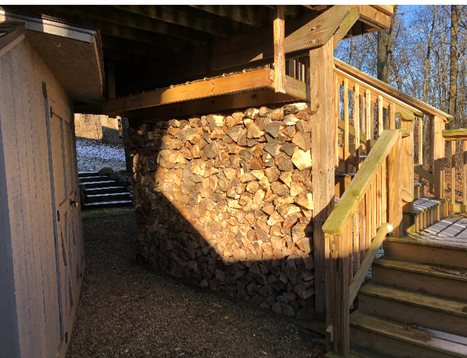
The second wood pile is along the side of the garage, with rain protection and appropriate air flow. Surprisingly that two-foot overhand keeps the wood dry all year ‘round.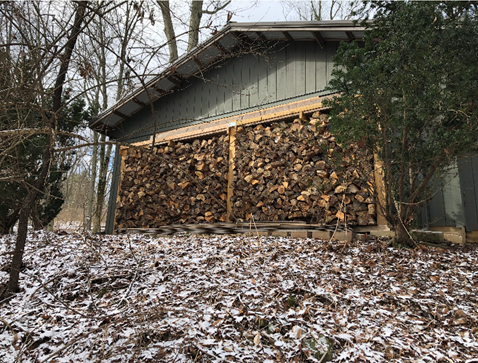
How to Chop Firewood
Chop the logs in the correct size to fit into your firebox to avoid frustration when the logs are too long. I like to chop my logs two inches smaller than the opening of the firebox.
It works well to have a solid surface on which to chop the wood. I chop wood in my driveway with a 2 x 12 to protect the concrete from the ax. If you split right on concrete, you might damage it.
I use a maul and wedges for larger pieces and just the axe for kindling. I enjoy chopping wood but it does take a lot of energy. Enjoy a hearty hot breakfast before you head out to your chores.
How to Haul Logs to Your Woodpile
Hauling logs from the wood pile into your house can be quite a chore so keep that in mind when you decide where to store and stack the firewood. Be sure your stack is close to where you are doing to burn the wood instead of out in the woods, where you were chopping the wood. Do the hauling and stacking when the weather is nice (spring or summer) and don’t wait until the dead of winter. A cart that fits through a doorway, and even goes upstairs, can make this job much easier.
I have the LogOX Woodsman Package, which makes it much easier to handle the wood. Firewood can be wet, slippery and heavy and this tool will make your job easier.
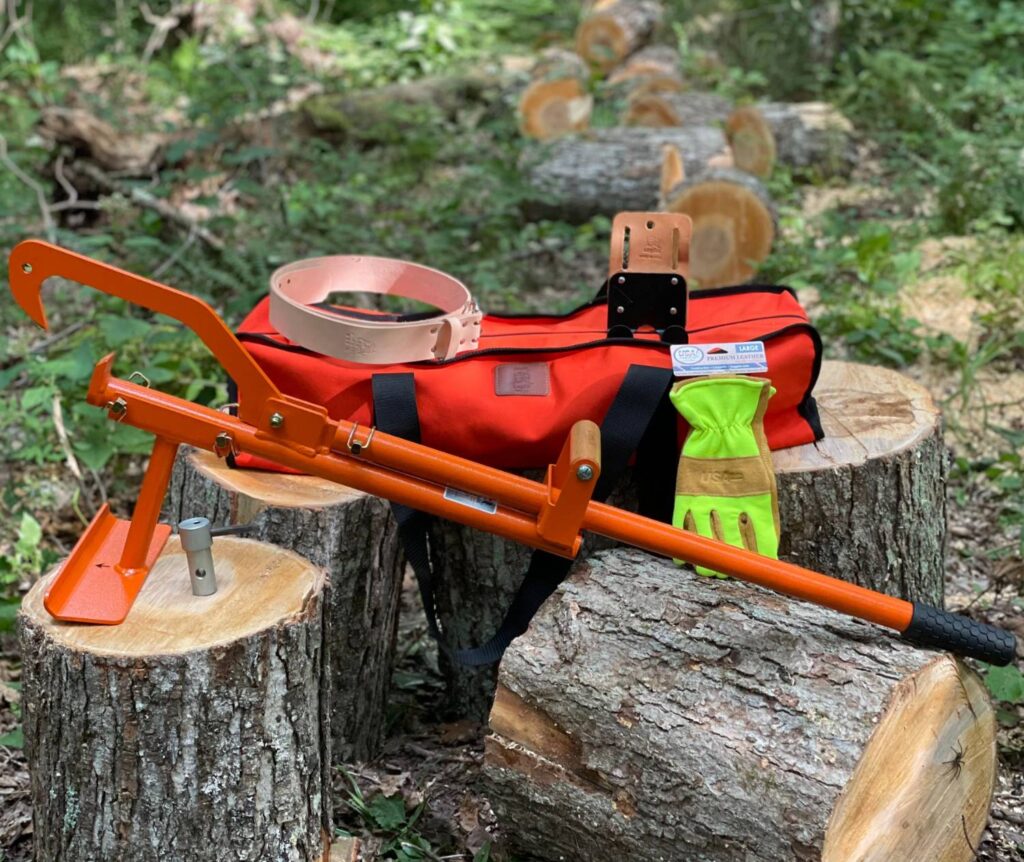
An inexpensive log carrier can also be handy to grab a stove-full of wood quickly.
How to Stack Your Woodpile
Understand stand the first logs you stack are the last logs you will take off. Don’t stack green wood on top of already seasoned wood. You could move the seasoned wood off the rack, and then stack greener wood underneath it and restack the seasoned wood, but that’s a lot of work. Better yet, have two different stacks – one for fully seasoned wood and one for green wood, which you might not use until the following winter. Your method depends on how much room you have and your willingness to do physical labor.
If you want kindling, keep it separate – don’t bury it in your pile because you will need access to it every time you start your fire. You won’t even need kindling if you have good firestarters.
Selecting Your Firewood
My favorite woods to burn are cherry, oak and beach. Maple, hickory, walnut are also good. These solid woods burn long and very hot, creating maximum BTUs.*
Don’t burn pines and most other evergreens – they burn very fast and they build up creosote. Poplar, while not a creosote creator, also burns up too fast.
Although this may sound like a lot of hard work, I find this process very satisfying and rewarding and well worth the effort.
* The term firewood BTU is used to describe how much energy a fuel (firewood) has. Most people burn firewood for one reason….heat. So, it only makes sense to burn a firewood that generates high BTUs so your home can stay as warm as possible.
BTUs are especially important during those cold winter nights when the outside temperatures can sink into negative digits and you need all the heat you can get out of your wood stove.
BTU or British Thermal Unit is the amount of energy required to heat one pound of liquid water by one degree Fahrenheit.

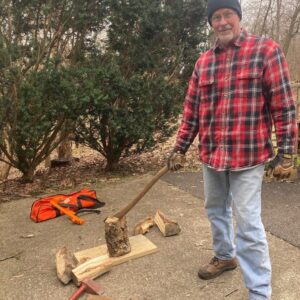

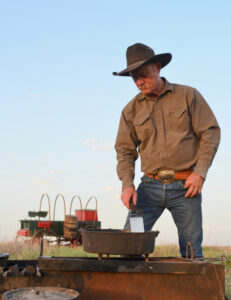







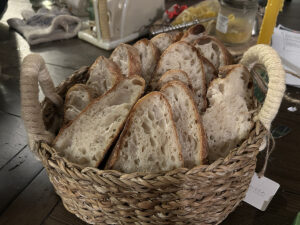




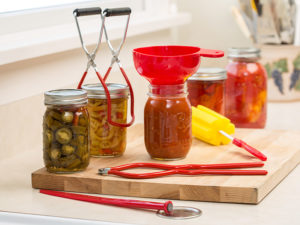




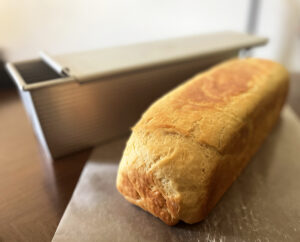

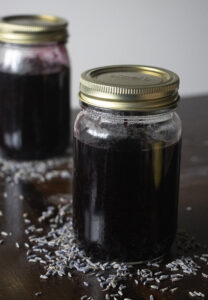


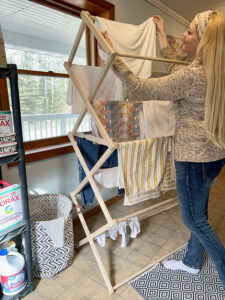

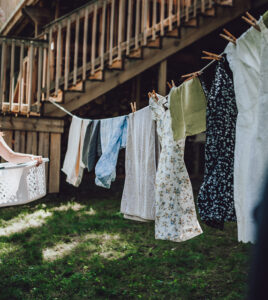


Excellent article. Here in Cal people burn a lot of pine and other evergreens because they are abundant. Bad idea and they pay for it. Hopefully some of them will read your blog.
A couple comments I will make, I cut and burn easily12-15 full size pickup truck loads of firewood a season. So, I cut firewood all year long as needed, spring cut wood has more moisture and natural sugar in it than fall cut wood, assuming the tree wasn’t dead when cut. I have also found that wood cut when the sap is up has more sugar in it and can affect the creosote buildup. It will take the extra time through the summer heat to help pull that extra moisture out. The type of heating system you are burning the wood in will also determine how precise you need to be when curing the firewood.